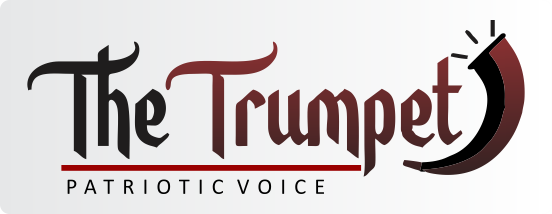The United States and China solidified a framework to advance the trade consensus reached during talks in Geneva in May, marking a significant step toward de-escalating trade tensions between the world’s two largest economies. The agreement, finalized after high-level negotiations in London and approved by both U.S. President Donald Trump and Chinese President Xi Jinping, focus on resolving disputes over critical mineral exports, particularly rare earths, and reciprocal trade restrictions.
In mid-May 2025, U.S. and Chinese officials met in Geneva, Switzerland, to negotiate a 90-day truce in their escalating trade war. The talks resulted in a preliminary agreement to reduce U.S. tariffs on Chinese goods from 145% to 30% and Chinese tariffs on U.S. imports from 125% to 10%, alongside commitments to ease non-tariff barriers, including China’s restrictions on rare earth exports. However, the truce faltered when China delayed export licenses for rare earths, prompting U.S. countermeasures such as restrictions on semiconductor design software, aerospace components, and Chinese student visas. This led to accusations from both sides of violating the Geneva deal, necessitating further negotiations in London.
Following two days of marathon talks in London ending on June 11, 2025, U.S. and Chinese negotiators, led by U.S. Commerce Secretary Howard Lutnick and Chinese Vice Premier He Lifeng, reached a framework to implement the Geneva consensus. On June 25, both nations confirmed additional details, formalizing the agreement. Key components include:
China’s Commitment on Rare Earth Exports: China has agreed to review and approve compliant export applications for controlled items, including rare earth minerals and magnets, in accordance with its laws and regulations. A “green channel” will expedite license approvals for trusted U.S. manufacturers, with licenses valid for six months. This applies to non-military end users, as Beijing has not committed to lifting restrictions on specialized rare earth magnets used in U.S. military applications, such as fighter jets and missile systems.
U.S. Rollback of Restrictions: In response, the U.S. will cancel a series of restrictive measures imposed since the Geneva talks, including export controls on electronic design automation (EDA) software, industrial goods, and student visa restrictions. However, pre-Geneva U.S. export controls, such as those on advanced AI chips, will remain in place, reflecting ongoing national security concerns.
Tariff Adjustments: The framework maintains the Geneva truce’s tariff reductions, with U.S. tariffs at 30% (plus additional levies totaling 55% in some cases) and Chinese tariffs at 10%. Discussions to address deeper trade imbalances, including the $295 billion U.S. trade deficit with China, are ongoing but unresolved.
The agreement was described by Lutnick as putting “meat on the bones” of the Geneva deal, with both sides emphasizing the importance of a June 5 phone call between Trump and Xi in stabilizing negotiations.
Rare earth elements, critical for industries like automotive, electronics, and defense, have been a central issue in the trade dispute. China, which accounts for 70% of global rare earth mining and over 90% of processing, imposed export controls on seven rare earth elements in April 2025 in retaliation for U.S. tariffs. This disrupted supply chains, causing temporary factory closures, such as Ford’s Chicago plant, and raised alarms among U.S. and European automakers.
Read also:
- US asks China to stop Iran from closing Strait of Hormuz
- City of Electric Buses: China leads World in public transport electrification
- Iran’s Defense Minister Aziz Nasirzadeh arrives in China amid rising tensions with Israel, US
The new framework aims to restore the flow of rare earths to U.S. civilian manufacturers, with companies like JL MAG Rare-Earth reporting approved export licenses to the U.S. However, China’s retention of controls on military-use rare earths highlights its strategic leverage, as these materials are vital for defense technologies. Analysts warn that China’s export control regime remains a powerful tool to influence not only the U.S. but also its allies.
The framework reflects a delicate balance of mutual concessions driven by economic pressures rather than shared interests. Scott Kennedy of the Center for Strategic and International Studies noted, “This deal is taped together by the two sides’ leverage over each other, not common principles.” China’s rare earth dominance gives it significant bargaining power, while U.S. countermeasures, including visa restrictions and tech export bans, pressured Beijing to return to the table.
However, skepticism persists. Chinese analysts, such as Liu Weidong from the Chinese Academy of Social Sciences, argue that fundamental issues like the U.S.-China trade imbalance cannot be resolved before the August 10 deadline set in Geneva. U.S. analysts, like Deutsche Bank, caution that past trade talks (2018-19) followed a pattern of progress followed by setbacks, suggesting the current framework may face similar challenges.
Global markets have reacted cautiously. The S&P 500 showed minimal movement, and China’s CSI 300 traded slightly higher, reflecting expectations that the framework was a foregone conclusion. Investors remain wary of unresolved details and the potential for further disruptions, particularly given the exclusion of military-use rare earths.
The framework is a temporary reprieve, not a resolution. It addresses immediate supply chain concerns but leaves deeper issues, trade deficits, technology restrictions, and geopolitical rivalries unresolved. The U.S. faces pressure to develop alternative rare earth supply chains, with analysts urging investment in domestic mining and processing to reduce dependence on China.
For now, the agreement stabilizes trade relations, benefiting industries reliant on rare earths. However, its six-month scope for rare earth exports and the exclusion of military applications suggest ongoing tensions. Both sides have signaled a commitment to further talks, but the fragility of the truce and China’s strategic use of rare earths as leverage indicate that disruptions could resurface.






